Editor's note: in early 2024 it was announced that Raby Hunt would close on 27th January and that James Close would move to Rockliffe Hall in Darlington.
Raby Hunt is in the little village of Summerhouse, six miles from Darlington. The name comes from the Raby Estate, set up by the Duke of Cleveland. The Grade II listed building, dating back to the early 1899s, was an inn where the hunt used to meet. The premises were taken over by James Close in 2009, and he was rewarded with a Michelin star in the 2012. A second star followed in the 2017 guide. James was brought up in a hotel-owning family but did not have a formal chef training, instead having been a professional golfer before he turned to the kitchen. As well as the restaurant, there are three bedrooms on the property if you want to stay overnight.
As you enter the dining room you walk over a glass skull embedded in a cabinet in the floor. This rather quirky decoration is seemingly due to the owner having designed a skull shaped chocolate, and also his being a fan of fashion designer Alexander McQueen, who used a skull motif as his signature trademark. The dining room is simply decorated, other than the skull, who is nicknamed “Freddy”. The format is a no-choice tasting menu, priced at £95, which seems to me not unreasonable given the considerable number of courses that appear. The same price would barely buy you a starter in some Parisian restaurants.
The wine list had an unusually extensive set of tasting notes, and short articles about a number of the listed growers. The wines ranged in price from £36 to £199, but with a lot of choice under £50, and there seemed to be an emphasis on biodynamic wines. Examples labels were Franklin Tate Semillon Sauvignon 2015 at £39 for a bottle that you can find in the high street for £12, Legdo Chardonnay Reserva 2015 at £56 compared to its retail price of £13, and Domaine Dard et Ribo Crozes Hermitage Blanc 2013 at £84 for a wine that will set you back £30 in a shop. At the prestige end of the list, Newton Unfiltered Merlot 2012 was £105 compared to its retail price of £36, and Domaine d’Ardhuy Clos Vougeot 2010 was £199 for a label whose current market price is £79.
The meal began with a series of nibbles. Ebene caviar (a farmed caviar from the Gironde) and creme fraiche with a little Amalfi lemon was served on crisp cod skin. This was a nice flavour combination, and the cod skin was genuinely crisp, unlike some versions I have eaten elsewhere (16/20). A scallop from the Isle of Mull was served raw, with just a little lime and jalapeño dressing. This was a top notch scallop, beautifully sweet, and the touch of acidity from the lime and hint of spice from the pepper were all that was needed (17/20). Even better was the crab taco with avocado, the taco made from scratch in the kitchen n the kitchen and having a distinct flavour of sweet corn. The crab inside was beautifully fresh, and the combination with the avocado is a classic one (18/20). There were two further nibbles involving Lindisfarne oysters. A pomme soufflé came with an oyster emulsion and a garnish of lovage, the potato shell being very delicate. This was followed by slow-cooked oyster with cucumber, dill oil, British grown wasabi, an oyster leaf and cucumber granita. The oyster was good quality and the gentle bite of the wasabi was a nice idea (16/20).
Dehydrated Jerusalem artichoke crisp came with both hot and cold offal. There was ragu of duck liver, heart and gizzard, a frozen version of the offal and a cherry parfait. Mixing hot and cold in a dish can be problematic, but this proved quite effective, the ragu having deep flavour and the crisp excellent (17/20). I was particularly taken with the next dish, razor clams, potted brown shrimps, almonds, endive, girolles, celeriac and pea shoots, all served in a razor clam shell. Razor clams can often prove chewy, but these were excellent, and the combination with the other elements was very harmonious, the seasoning spot on (17/20).
Raw beef fillet from Australian wagyu cattle was next, served with capers, nasturtium leaves, capers and caviar. This was the least successful dish of the meal, the beef rather lacking in flavour, the overall dish seeming to me inferior to a regular beef tartare (barely 14/20). The vegetarian alternative was much better: cauliflower was charred and pickled, served with hazelnuts and Tasmanian black truffle. This was a lovely combination, and the cauliflower had great flavour (17/20). This was a really good illustration of how a genuinely good vegetable dish can outperform a dish centred around a lump of meat.
Spring salad was prettily presented, sourced from a combination of some root vegetables grown in the pub garden, plus others from a supplier called Ken Holland in Northumberland, who specialises in heritage crops. The elements included carrot, asparagus, beetroot and assorted leaves and flowers. This was entirely pleasant, though it is difficult for British vegetables to really compete with those grown in sunnier climes (16/20). Squab breast and leg were served with anchovy emulsion, spring greens and a black olive sauce. This was very enjoyable, the spring greens lightly cooked and offsetting the richness of the meat (16/20). An alternative was sea bream with smoked cod roe emulsion.
Black olive with yoghurt and chocolate tasted better than it sounds. Milk chocolate fudge was the dominant flavour, with the olive taste mercifully subdued (16/20). A lemon dessert came in different stages. First was lemon gel on a base of toasted almond crumb, with fennel ice cream and liquorice and fennel seed tuile. The tuile was delicate and there was plenty of lemon flavour coming through, which distracted from the debatable idea of the fennel ice cream. The next stage was lemon beignet flavoured with ginger, with topped with a poppyseed tuile on which was lemon and thyme curd. The beignet itself was good, the tuile pleasant. Finally there was liquid lemon presse with yuzu and lemon juice inside a shell of cocoa butter. This was a nice idea though the lemon filling was a bit too sharp (15/20).
Filter coffee from a local supplier called Railtown was introduced by the waiter as Colombian, though Huehuetenango (where the coffee was from) is actually in Guatemala. The coffee came with a chocolate in the shape of a skull made with a yuzu and rosemary ganache, alongside a “Buddha” of mango and white chocolate, as well as a truffle with hazelnut.
Service was excellent, the staff friendly and enthusiastic, the atmosphere relaxed. The bill came to £183 a head before tip, though that was with an excessive quantity of fine wine. If you shared a simple bottle then a typical cost per head might be around £130 all in. As often in restaurants in Britain, the pastry section was the weak link; this is one thing that restaurants in France typically do exceptionally well, and yet the UK seems to train very few real pastry chefs. Overall this was a very enjoyable experience, with a lot of work having gone into the dishes and a few genuine high points.
































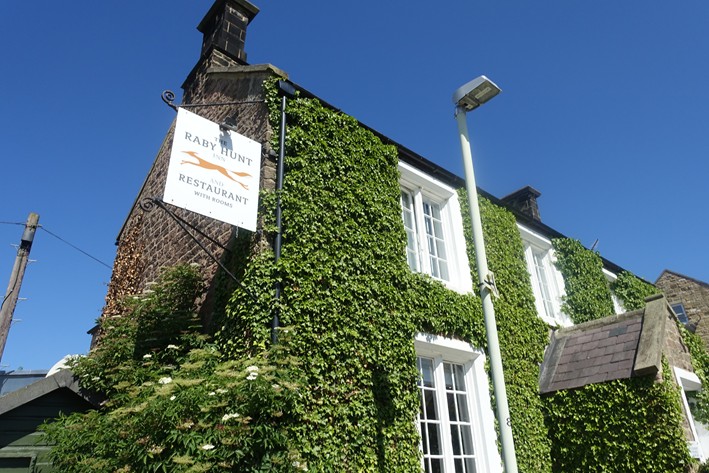



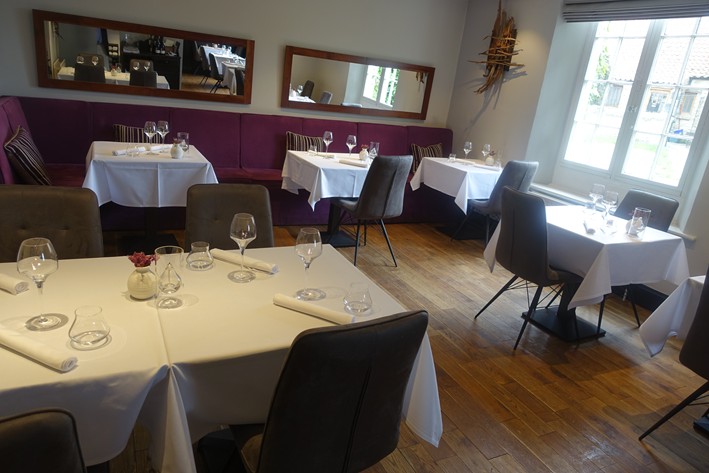
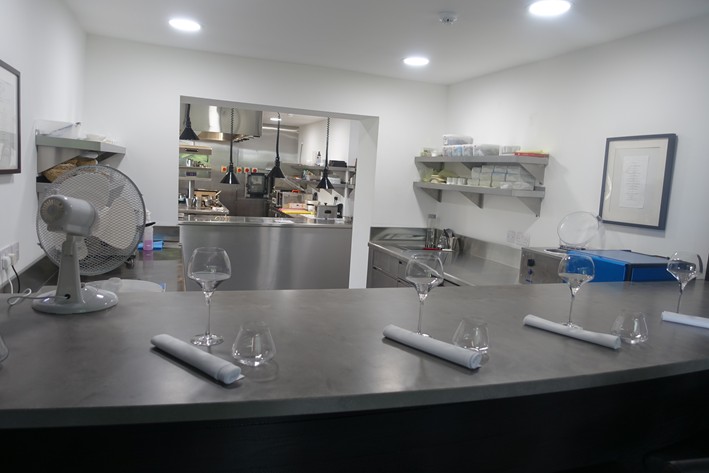

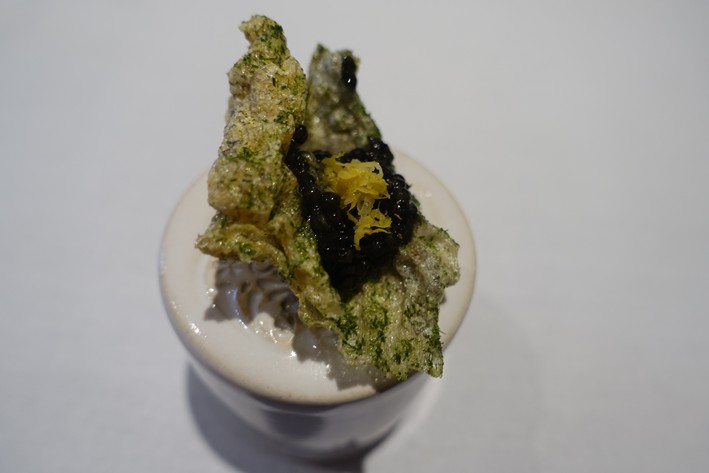

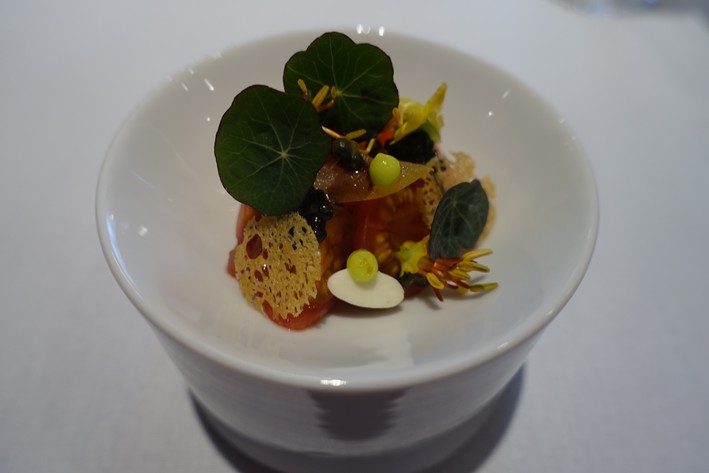

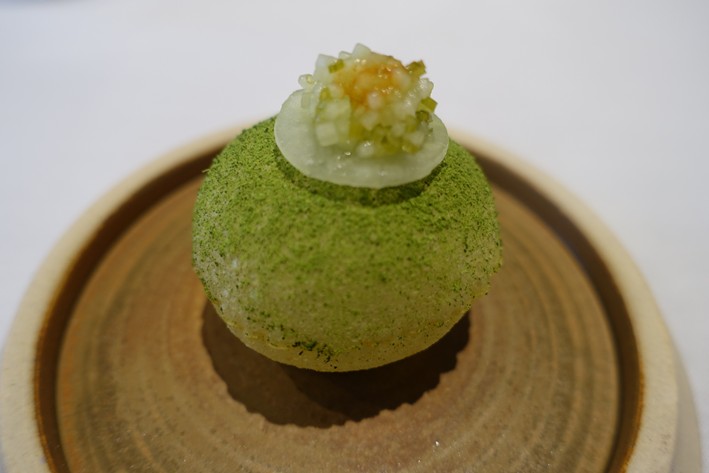
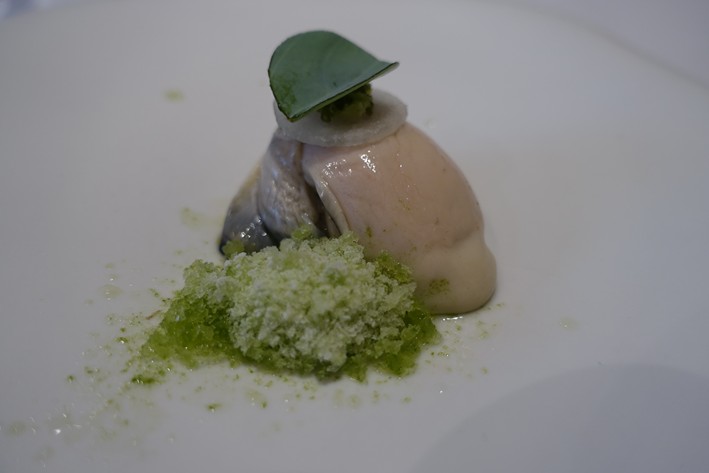
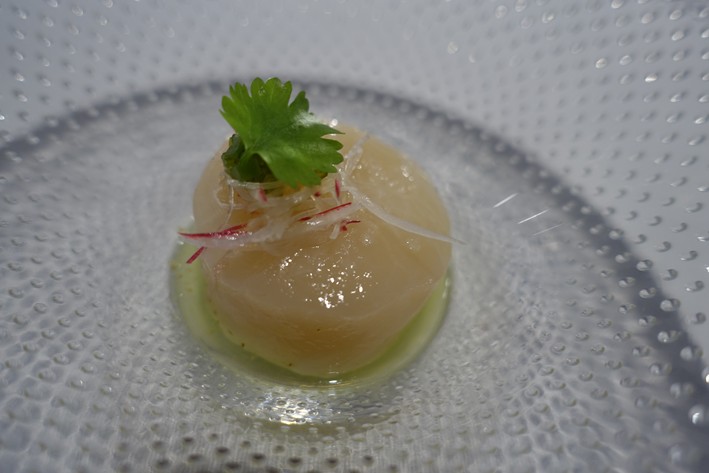

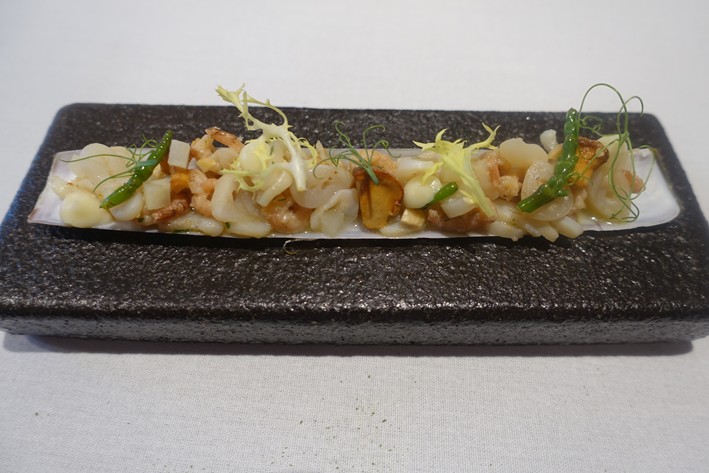
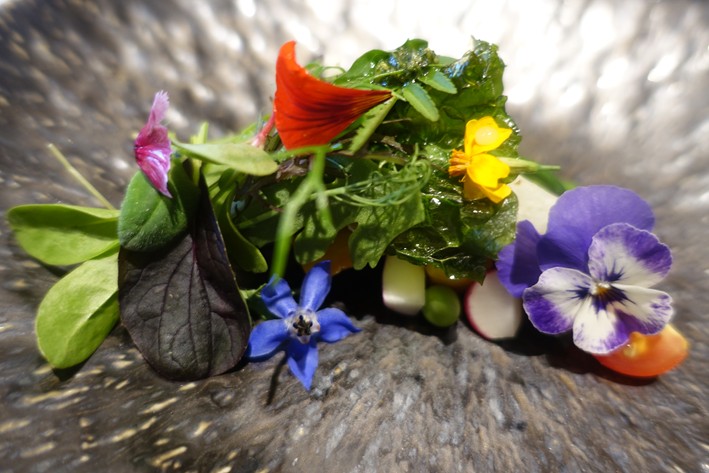
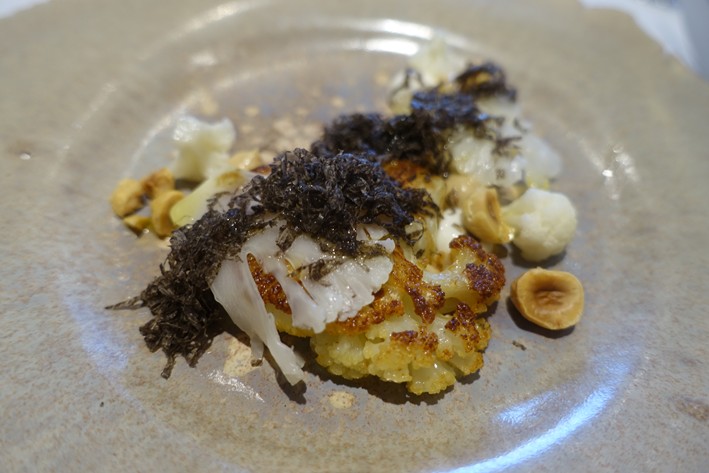
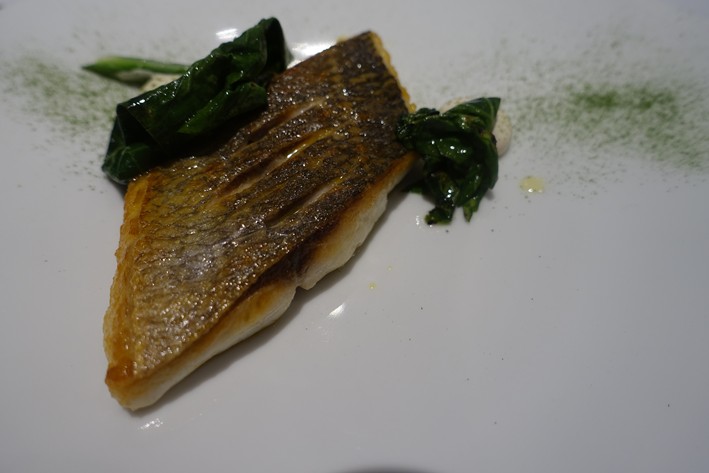

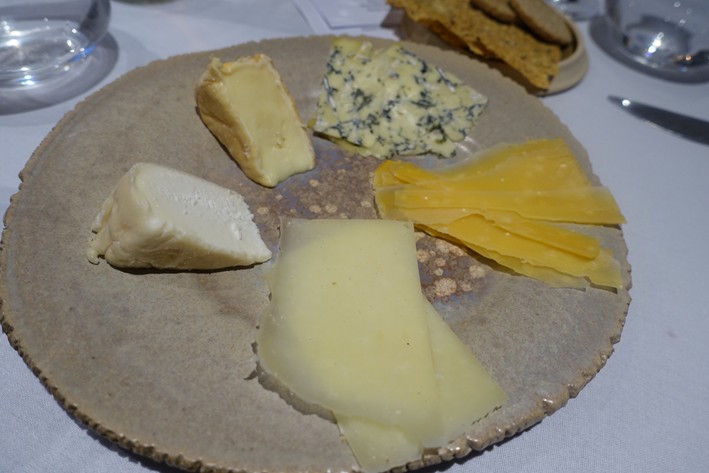
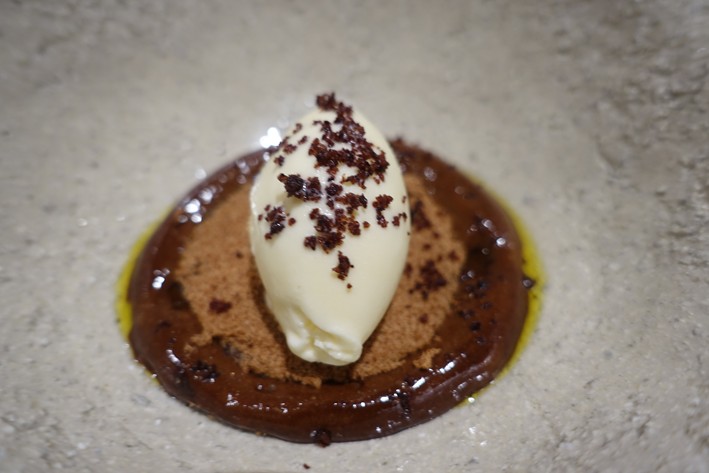
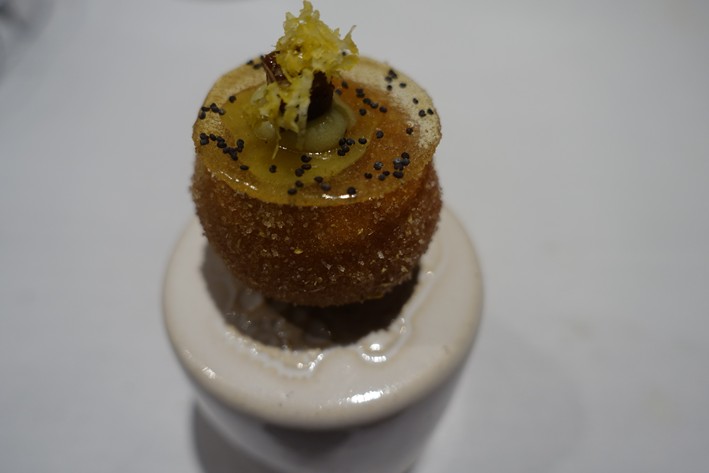

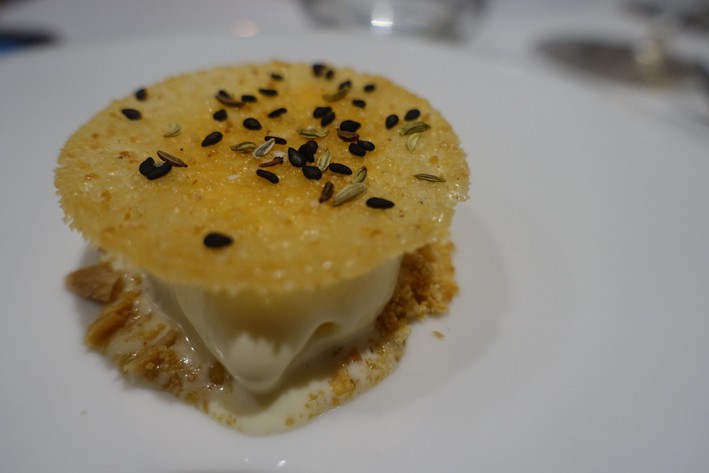



Add a comment
Thank you for submitting your comment, this will be checked and added to the website very soon.
User comments